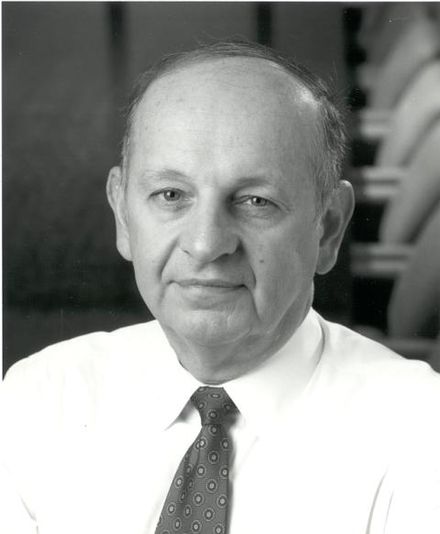
About the picture: George Heilmeier was the Director of DARPA from 1974-1977, where he developed seven questions that he used to determine whether to fund research projects. The questions became known as Heilmeier’s Catechism and are still used today. The image is from: https://en.wikipedia.org/wiki/George_H._Heilmeier
George Heilmeier (1936-2014) was a engineer and technology executive who started his career working in liquid crystal displays (LCD) at RCA (1958-1970), became a White House Fellow (1970-1971), a senior executive at DOD (1971-1974), the Director of DARPA (1974-1977), a technology executive at Texas Instruments (1977-1991), and the President and CEO of Bell Communications Research Inc. (Bellcore) (1991-1996).
He was elected to the US National Academy of Engineering in 1979, and in addition to other awards and recognitions, he won the 2005 Kyoto Prize for his invention of the liquid crystal display.
While working at DARPA, he came up with a simple set of rules for selecting and managing technology projects that became known as Heilmeier’s Catechism. There are several formulations, including the following list of questions:
Heilmeier’s Catechism
- What are you trying to do? Articulate your objectives using absolutely no jargon.
- How is it done today, and what are the limits of current practice?
- What’s new in your approach and why do you think it will be successful?
- Who cares? If you’re successful, what difference will it make?
- What are the risks and the payoffs?
- How much will it cost? How long will it take?
- What are the midterm and final “exams” to check for success?
He became the CTO at Texas Instruments and developed a framework for CTOs that is lesser known and consisted of twelve rules. The rules can be found in a December 30, 2009 blog post by Rich DeMillo, who is a Distinguished Professor of Computing and Management at Georgia Tech in Atlanta.
In 2012, I adapted these 12 rules to create 12 rules for Chief Analytic Officers or Chief Data Officers. I used to go over these when I taught a course at the University of Chicago Booth School of Business on the Strategy and Practice of Analytics (2013-2015) . You can learn more about these rules in Chapter 10 (Analytic Governance) of my upcoming book The Strategy and Practice of Analytics. Here are the rules:
Twelve Rules for Chief Analytic Officers (or Chief Data Officers)
- For each “client” establish/conceive a list of technologies and initiatives that drive the business and a list of technologies and initiatives that could change the business.
- Use the Catechism to get people to focus on essentials when making analytic investment decisions and establishing analytic priorities.
- Understand the limits of analytic technologies and capabilities today.
- Establish a good working relationship with your peers in marketing, sales, finance, HR, etc.
- Align analytic strategy with the real priorities and the strategy of your organization, as understood by your CEO and Chairman.
- Establish metrics for the success of your programs in their eyes.
- Don’t shy away from doing some near term problem solving and working basic projects in analytics. It builds credibility and respect.
- Never have your peers or clients come to your office for meetings with you. Go to theirs.
- It is easy to be arrogant when discussing a technical subject. But remember, any display of arrogance will cost you. Don’t do it.
- Compile a list of innovations that are needed in big data and analytics by your organization. How are these the same and how are they different from the innovations required by the broader analytic community.
- Make sure that each program or initiative is output oriented not activity oriented. Output = value to your organization.
- Learn your company’s culture. It is unique.
As mentioned, these are basically Heilmeier’s rules for a CTO, just lightly adapted.
Copyright 2019 Robert L. Grossman
